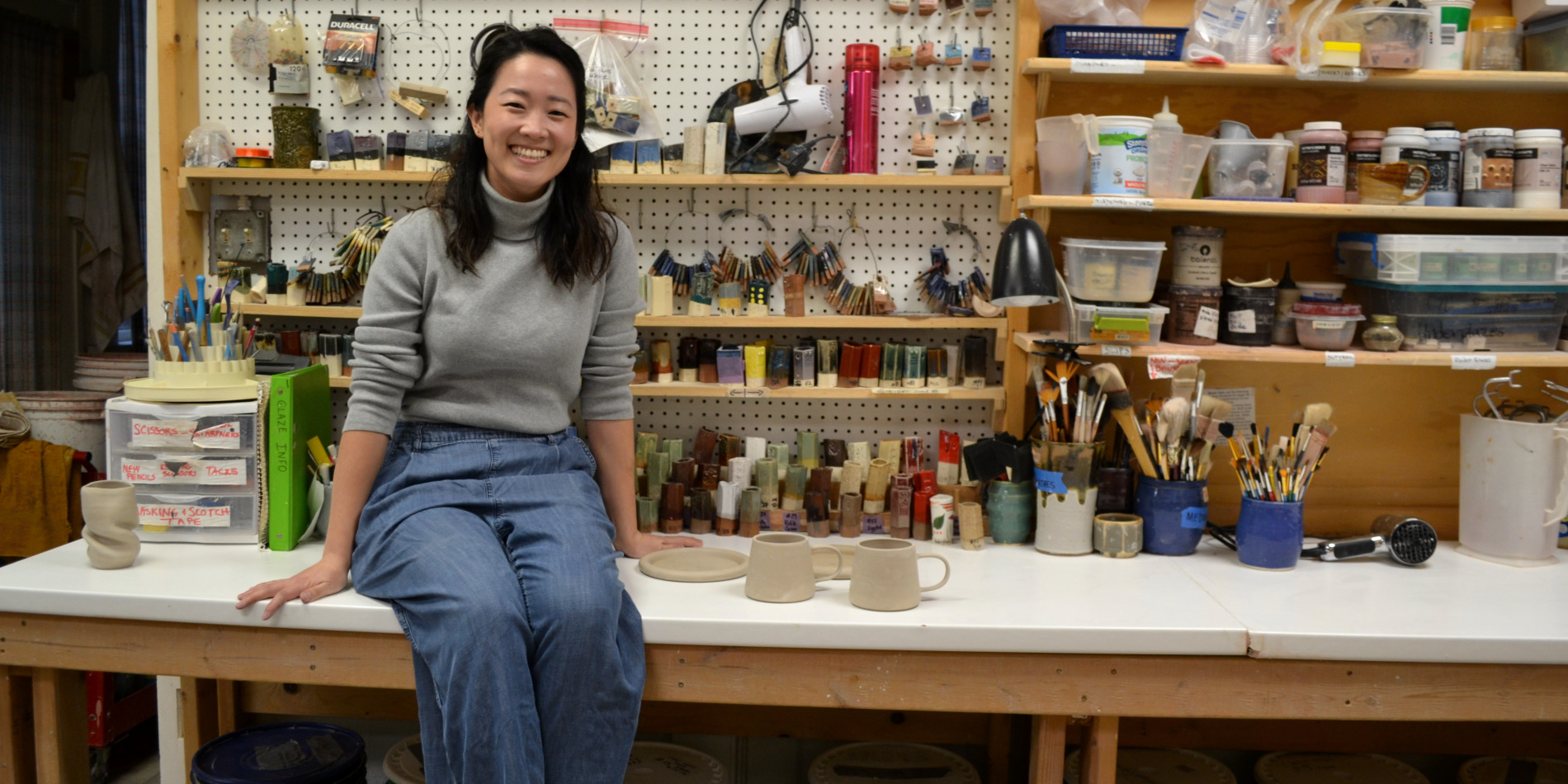I fell in love with the ceramics by OHMK Design on Instagram where Champaign-Urbana artist Hye-Min Kim shares how she turns clay into strikingly beautiful functional ceramics in timelapse videos. Some of her pieces can be found at C-U restaurants like Ladro Enoteca, the Downtown Champaign wine bar, and at ISHI, the omakase sushi bar by Hessel Park.
Early one Friday morning, I visited the Korean-American ceramicist at her C-U Potter’s Club studio for a closer look at her process. As she turned a ball of clay into a mug on a pottery wheel, she told me, “Clay has memory.” She shared how unforgiving the medium can be, what her favorite glaze colors are, and where she finds inspiration for her art.
This interview has been edited for length and clarity.
Smile Politely: What inspired you to take up ceramics?
Hye-Min Kim: I took a beginner ceramics class in the Fall of 2020 at the Springer Cultural Center to stay sane during the pandemic — after quitting my corporate job and moving out to C-U, so my husband could start medical school. I’ve always loved art and creating things with my hands, so it seemed like a fun thing to try out.
Now, I make ceramics because I enjoy creating art that can elevate the everyday and mundane. I create timeless functional ceramics that incorporate Asian artistic motifs into simple, elegant forms. I feel honored to create pieces that will spark joy in people’s daily lives.
SP: Can you talk about what’s tricky about making ceramics?
Kim: A few things! The long process from start to finish with various unpredictable factors outside of your control, the physical toll it takes on your body, and the expenses. Making ceramics is more than a month process per piece, and many things can go by wrong at any point in that process.
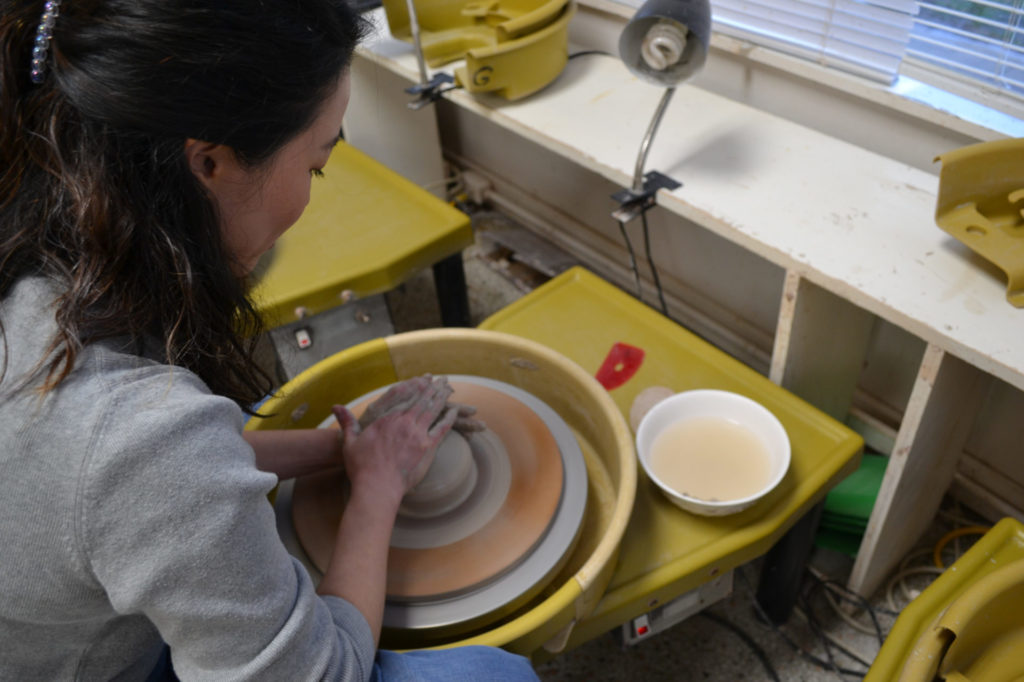
Timing is key at the wet clay stage; I need to trim and make any alterations to the piece before it dries out too much, or else the piece will crack. There are many decisions that need to be made before and throughout the process, and it can become overwhelming at times.
Wheel-throwing also isn’t the most ergonomic activity and can definitely take a toll on your back over time. I’ve thrown my back out in the past after throwing at the wheel for eight hours straight. Lastly, ceramics can get pretty pricey, especially with the cost of clay and glazes skyrocketing due to supply chain issues. Clay, glazes, tools, studio membership fees (and firing fees at some studios) — everything can add up really quickly.
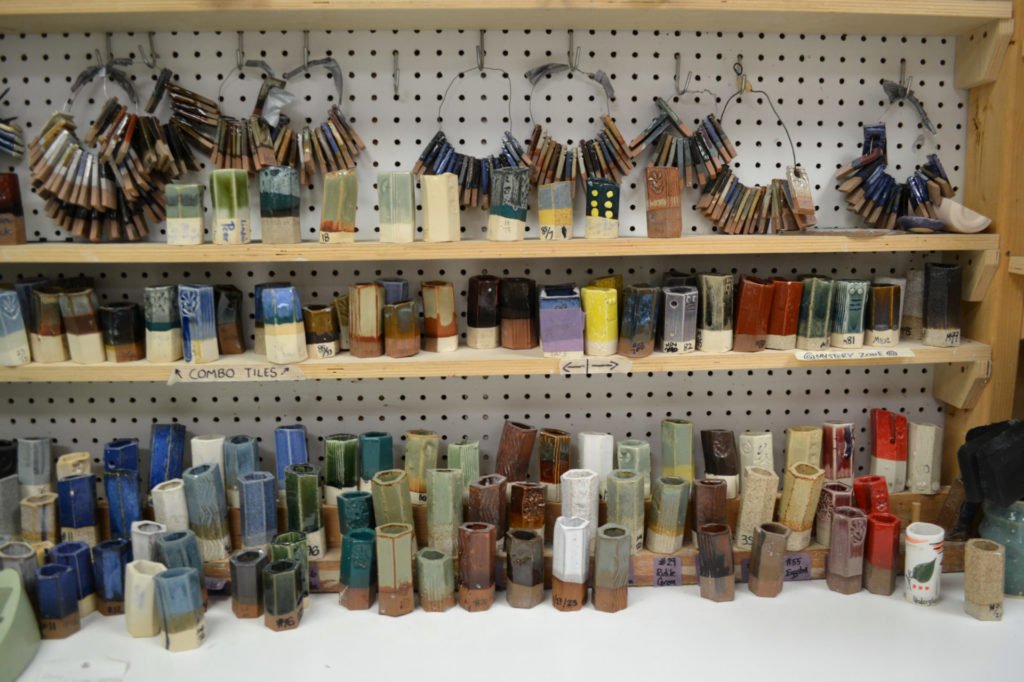
The trickiest part of making a beautiful piece for me is probably the glazing step. Not only is it always difficult to decide how I want to glaze my pieces — like colors and style — but also the kiln can be quite unpredictable. Even extremely experienced potters will be surprised at times by what emerges from their firings. I usually test my glazes before deciding how to glaze pieces I’ve spent lots of time on, but I’ve had pieces still turn out differently from what I had envisioned.
SP: Do you have a favorite kind of ceramic to make?
Kim: My favorite ceramics to make are probably bowls and cups without handles. There is so much potential variation in size, form, and colors — and I love being able to use them everyday.
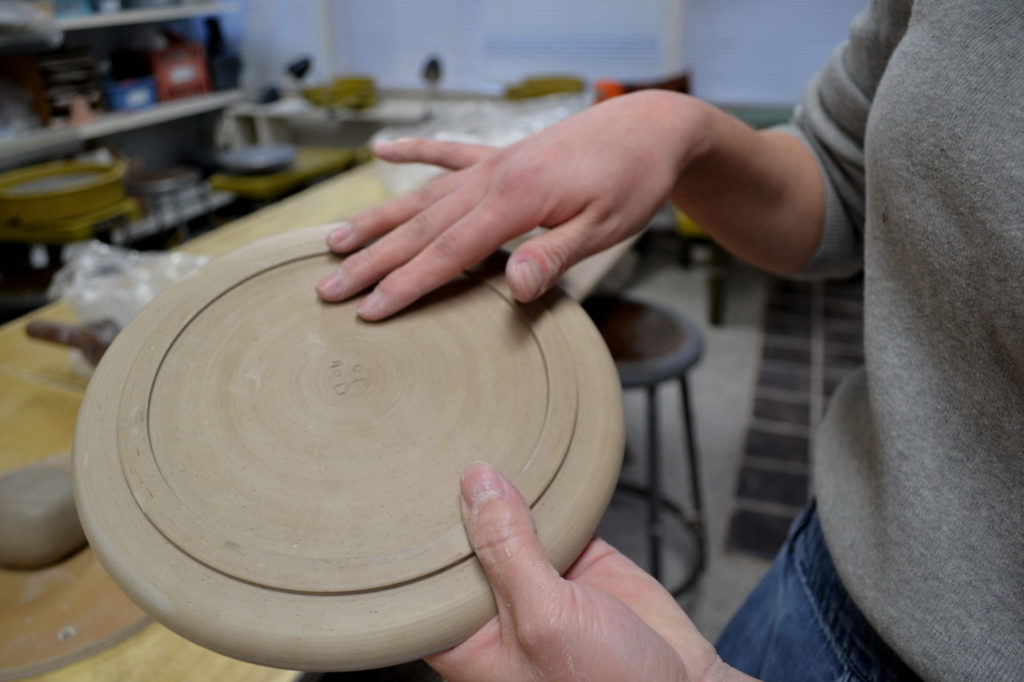
SP: Do you have favorite colors to work with?
Kim: I used to exclusively work with neutrals like white, black, and cream, or cool gem tones like blues and greens, but warm tones and brighter colors have been growing on me. I think my favorites would still be matte black and white or glossy blues and greens.
SP: What happens when you make a mistake? Can you rework it or would you need to start all over?
Kim: This depends on what the mistake is and at what point in the process it occurs. Some mistakes can be fixed, but most times, you’d probably need to start over. For instance, if the mistake were made while the clay is still wet and pre-fired, you could fix it, but once pieces have been fired, they can no longer be reverted back to workable clay, as it’s been forever transformed on a molecular level.
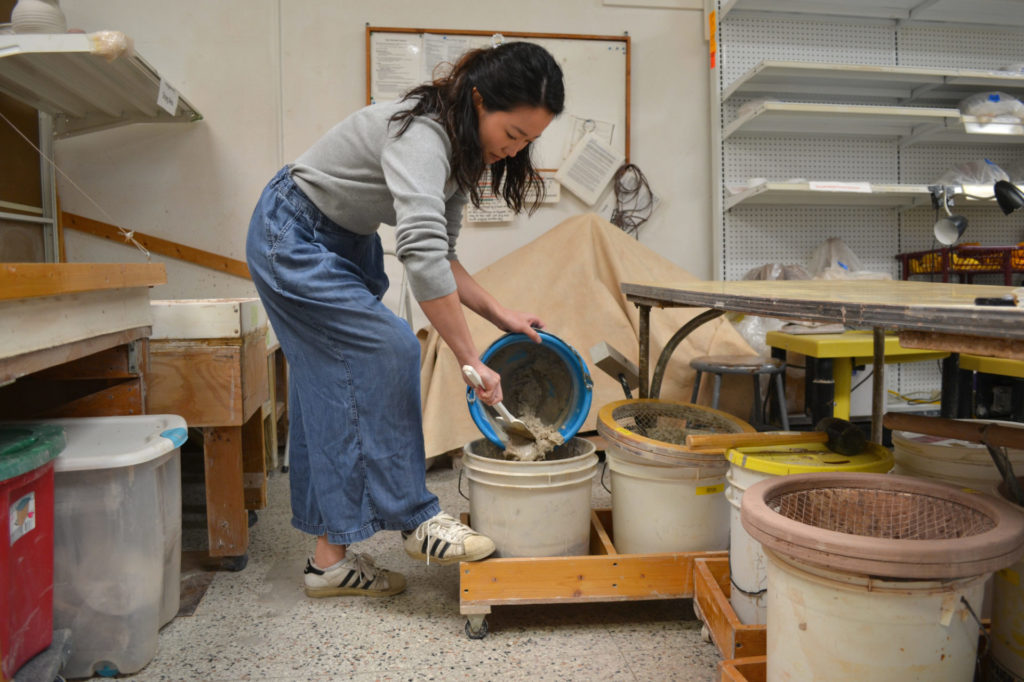
SP: How long does it take to make a bowl? Can you walk me through the process?
Kim: This depends on what kind of bowl, but in general, from start to finish, it typically takes one to two months at a communal pottery studio. There can be some wait time in between kiln firings, as the studio only fires once there are enough pieces for the kiln to be fully packed.
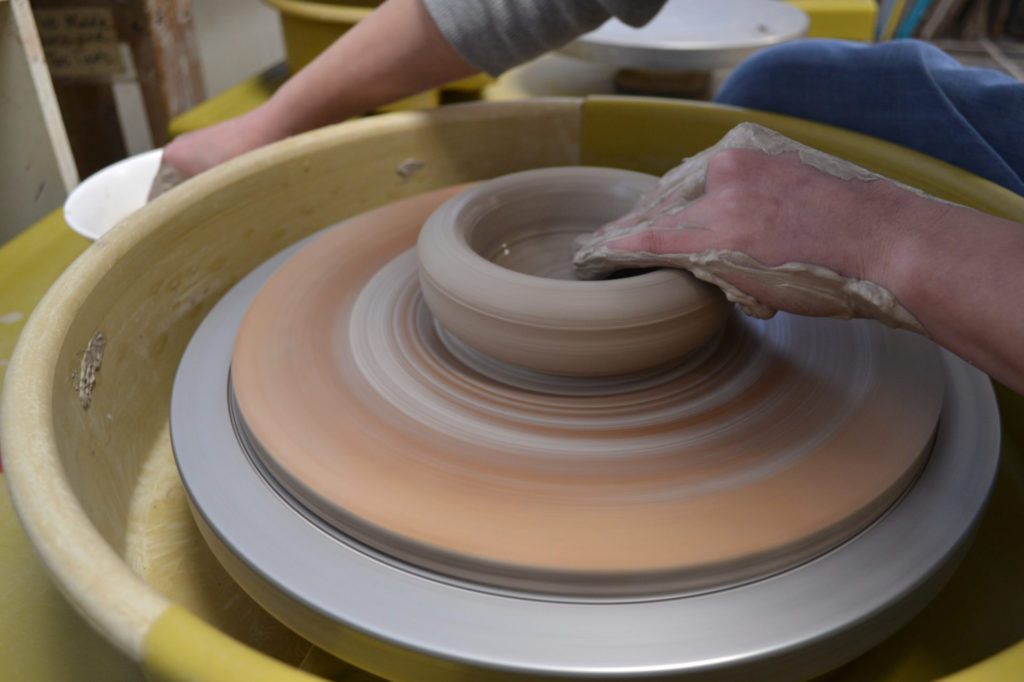
Throwing takes anywhere from five to 15 minutes depending on the size and shape of the piece.
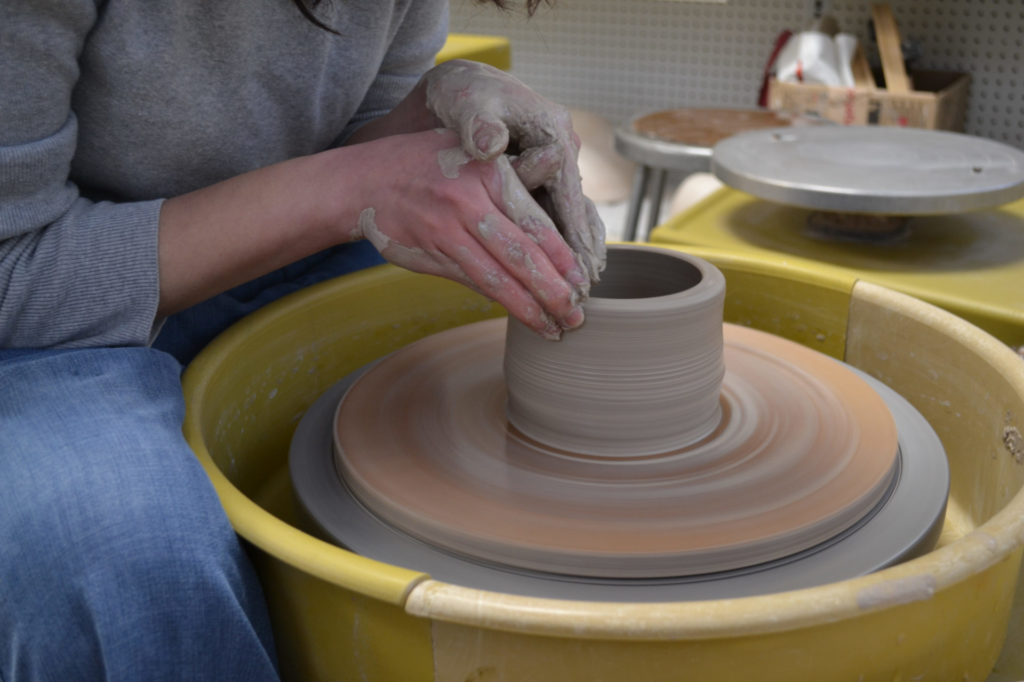
Then it’s wired off the bat and covered with plastic to dry until leather-hard, or dry enough that you can’t alter its shape by pushing on it but not too dry that the clay doesn’t trim off in ribbons.
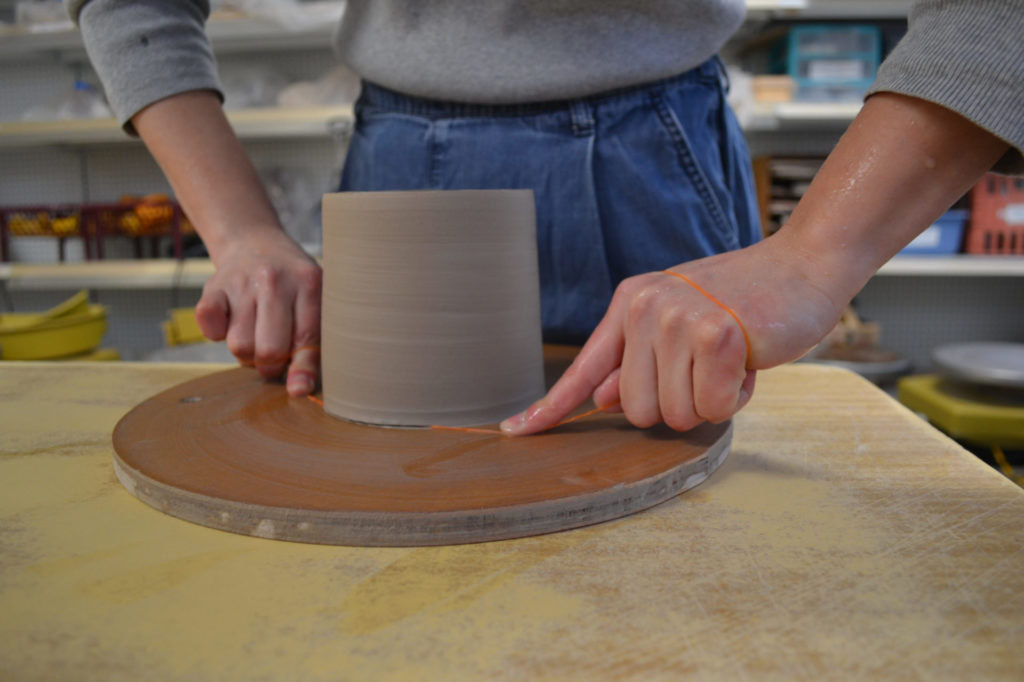
Drying can take up to two weeks before and after trimming the piece.
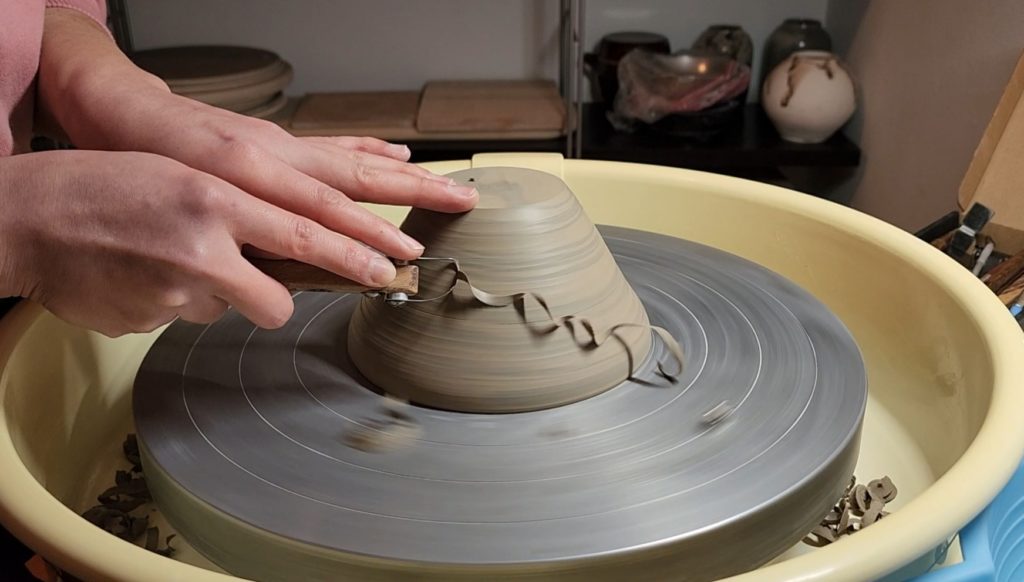
Trimming the foot and finessing the bowl’s shape takes around five to 20 minutes depending on size and shape, and then I cover it again to dry fully until bone dry.
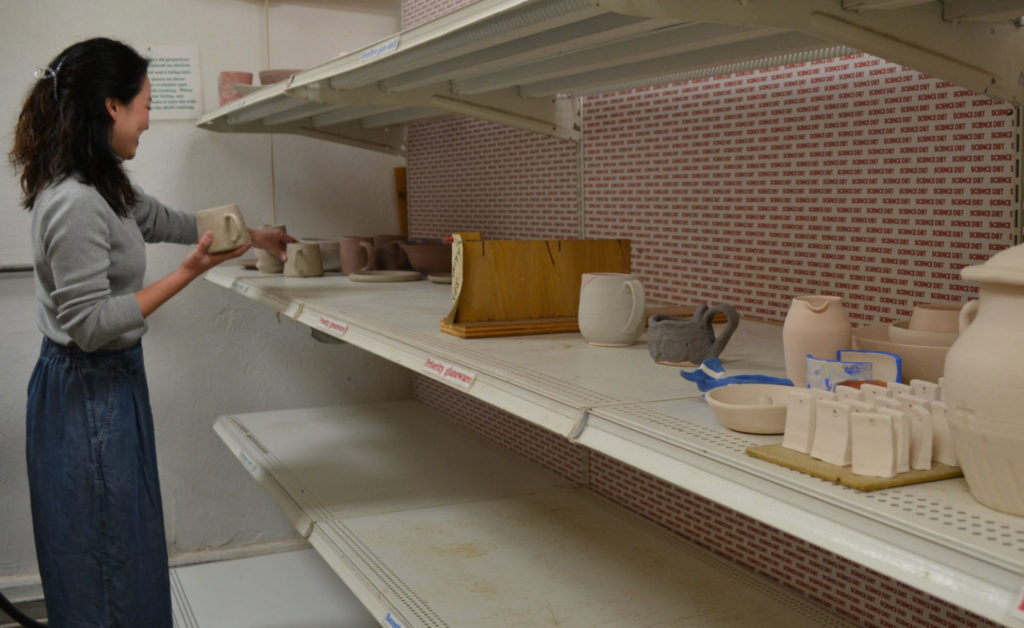
Once it’s bone dry, it’s loaded into the kiln for its first round of firing where the clay particles (greenware) are transformed chemically into ceramic (bisqueware). Then I sand and wipe down the piece with a damp sponge to make sure the surface is smooth and all the dust is removed for even glaze application. Next, I apply wax resist to the foot to keep the glaze from being absorbed on the bottom of the piece.
Glazing the bowl can take up to an hour or more depending on the complexity of the design and the number of glazes that’ll be layered. Each layer of glaze needs to dry fully before another layer is applied, and I usually use a hair dryer to speed up this process. After the bowl is glazed and dry, I wipe off the foot with a damp sponge to make sure all the glaze is removed from the bottom so it doesn’t stick to the kiln shelf when it is fired for the second and final time. Both firings take one to two days including time to cool down the kiln before opening. It’s important to allow the kiln to cool slowly before opening to prevent thermal shock, which can cause pieces to crack.
After the piece is removed from the kiln, I sand the foot smooth to make sure it won’t scratch any surfaces it’s placed on. Then a quick rinse to remove all the dust, and it’s finished!
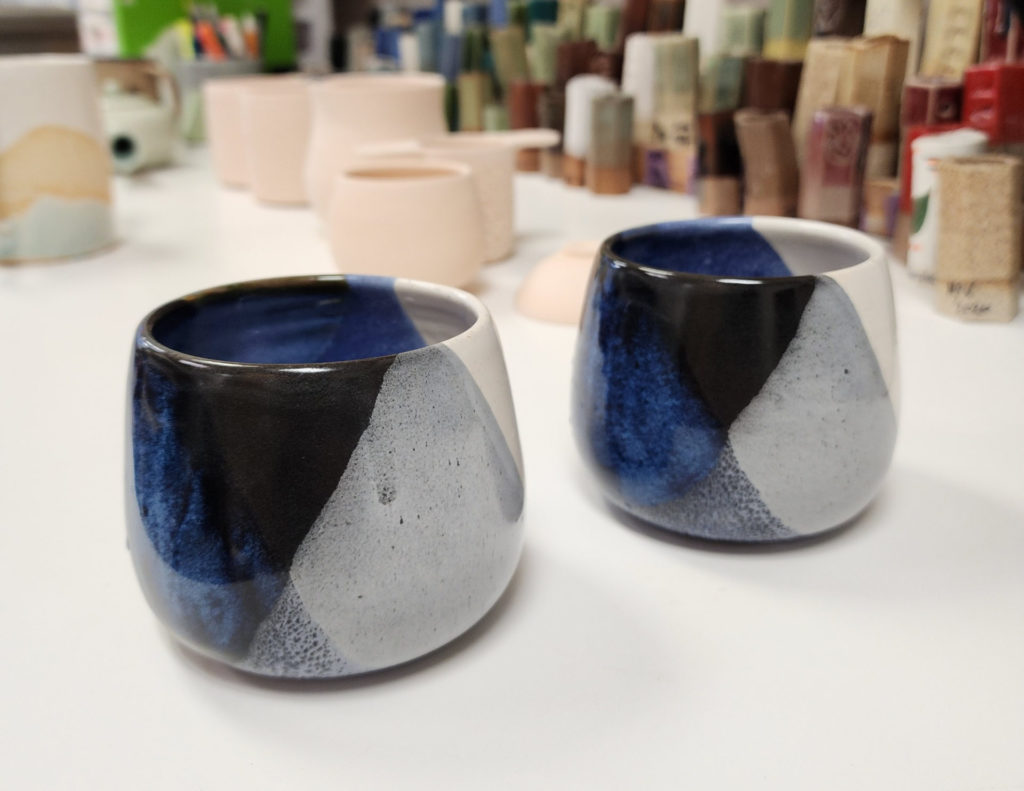
SP: What’s something you learned from making ceramics?
Kim: Clay is a very humbling medium. I’ve learned to embrace failure in the creation process and learn quickly from trial and error. Honing one’s skills in the craft can yield greater potential for success, but there are also many aspects of ceramics that are beyond my control. You may have heard potters refer to the kiln gods because the kiln can be very unpredictable. I have learned to not get too attached to any one piece until it emerges from its final firing.
I’ve also learned the importance of listening to my body and giving myself the freedom to rest when I need it. I tend to lose track of time when I get in the zone and have thrown my back out in the past when I went too hard for too long. I learned the hard way to acknowledge and honor the limitations of my body, but also that caring for myself is also a critical step in enabling myself to create my best work.
SP: What inspires your art?
Kim: I find inspiration everywhere, from ordinary, everyday things to my own personal experiences. I find inspiration from organic shapes and colors found in nature including oceans, forests, and the sky. Also, I am inspired by my Korean-American upbringing and enjoy incorporating different components of my traditional Korean heritage into my designs, such as Seoye, the art of historical Korean brush calligraphy.
I also enjoy handpouring glazes to highlight the unpredictability and dynamic nature of chaos, as well as the beauty of ephemerality of a single moment. Just as there are many aspects of life that cannot be controlled or repeated exactly, I want to honor and capture in my pieces how ceramics as a creation process also embodies these qualities.
I always strive for excellence in all that I do. My simple yet elegant forms leave no room to hide any mistakes, and I love creating beautiful, timeless pieces that also feel good to use, finding that perfect balance between good aesthetics and usability. I am constantly experimenting with different techniques and challenging myself to push beyond my comfort zone.
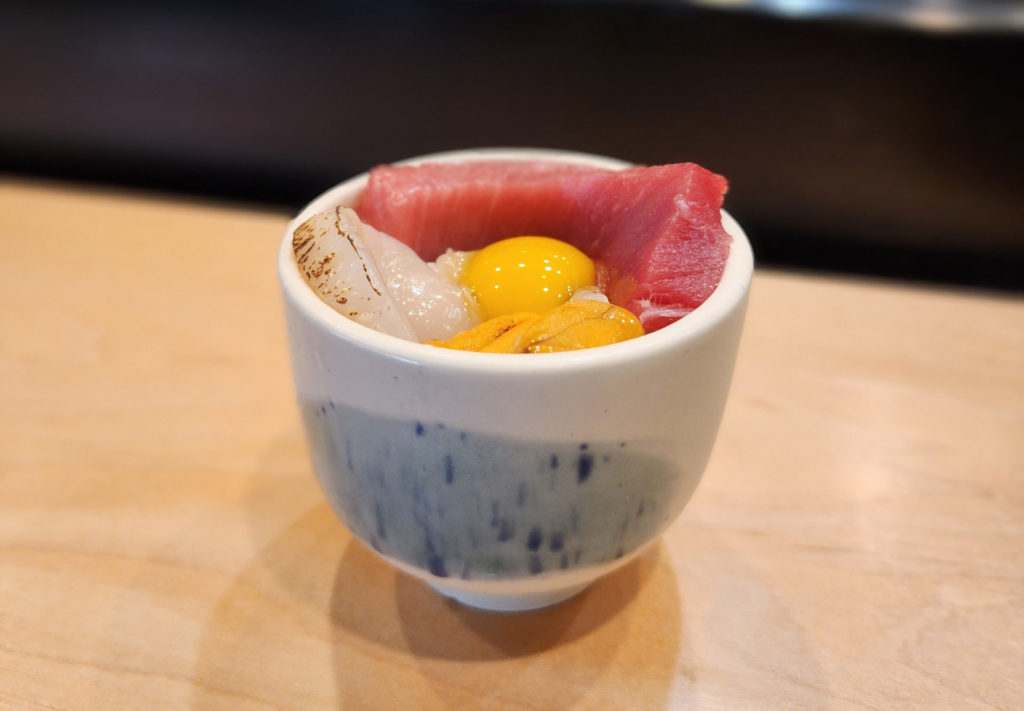
SP: How did your plates get to Ladro Enoteca?
Kim: I met Miky Eum, owner of Humbleweed Farm, in the first ceramics class I took out here. She found me on Instagram and later became one of my first customers and friends in C-U. Miky knew Thad Morrow, the owner of Ladro Enoteca, because he had been buying produce from her. When he told Miky that he wanted to commission custom handmade ceramics for Ladro from a local artist, she thought of me and connected us.
SP: Where else in C-U can we find your ceramics?
Kim: You can find more of my ceramics at ISHI and Golden Weather Goods.
SP: Do you have a shop where people can buy your ceramics?
Kim: Yes, I sell pieces at Golden Weather Goods and may restock at CU Floral House in the future, and I have my website: www.ohmkdesign.com. I make announcements of new pieces on my Instagram (@ohmkdesign).
SP: And of course, I have to know: what are your favorite restaurants in town?
Kim: My favorite restaurants in town are ISHI, Weird Meat Boyz (please open soon!), A Taste of Both Worlds, Manolo’s, Mo’s, and Smith Burgers — and of course, the occasional McDonald’s, Taco Bell, or Portillo’s.








